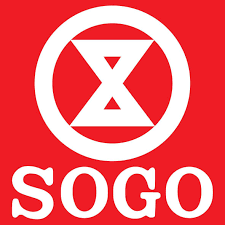SOGo — Open Source Groupware with Outlook and Mobile Sync
General Information
SOGo has been around for years as one of the few open-source groupware servers that actually works well with Outlook and mobile devices. The aim isn’t to reinvent email but to provide the kind of shared calendars, address books, and tasks that most teams expect from Exchange — only without Microsoft licensing.
It’s a common pick in universities, public sector deployments, and companies that want something heavier than Roundcube but lighter than Zimbra. For end users, the browser interface feels like a slimmed-down Outlook Web App. For admins, the appeal is standards compliance and the fact that it plugs into existing LDAP/AD directories with little fuss.
How It Works
SOGo sits on a Linux host, talking IMAP and SMTP to the underlying mail system (often Dovecot/Postfix). It adds groupware via CalDAV, CardDAV, and ActiveSync, which is why Outlook, Thunderbird, iOS, and Android all sync without extra plugins.
The web UI covers the basics: mail, calendars, contacts, tasks. Admins configure domains, access rights, and quotas, usually with LDAP or Active Directory providing user data. Security relies on TLS everywhere, and for sensitive deployments S/MIME or OpenPGP can be enabled.
Functions
| Feature | In practice |
| Platforms | Linux server; browser UI plus Outlook, Thunderbird, iOS, Android |
| Uses IMAP/SMTP backend; supports shared folders | |
| Groupware | Calendars, address books, tasks |
| Protocols | ActiveSync, CalDAV, CardDAV |
| Web client | HTML5 UI with mail, calendar, tasks |
| Authentication | LDAP/Active Directory integration |
| Security | TLS/SSL, optional MFA, S/MIME/OpenPGP |
| Multi-domain | Host multiple domains with separation |
| License | GPL open source |
Installation Guide
1. Spin up a Linux server (Debian/Ubuntu or RHEL family).
2. Install SOGo packages and dependencies (PostgreSQL/MySQL plus IMAP/SMTP server).
3. Configure database, mail backend, and LDAP/AD connection.
4. Enable HTTPS with Let’s Encrypt or custom certs.
5. Start services and test login via the web UI.
6. Connect Outlook, Thunderbird, or mobile devices using ActiveSync or CalDAV/CardDAV.
Large rollouts usually add a reverse proxy and load balancer for scale.
Everyday Use
– Universities run SOGo to give students and faculty shared calendars and contacts without paying for Office 365.
– Enterprises deploy it internally as an Exchange alternative when Outlook compatibility is a must.
– Government agencies pick it for sovereignty reasons — keeping groupware entirely on local servers.
– Mixed-device teams like that iPhones, Android phones, and desktop clients sync naturally, no odd plugins required.
Day to day it’s basic but predictable: check mail, schedule a meeting, share a contact list.
Limitations
– Install and tuning are more work than simple webmail like Rainloop.
– ActiveSync sessions can eat resources fast; tuning database and memory is essential.
– Ecosystem is smaller compared to Zimbra or Exchange.
– No built-in chat or docs — for that, admins often pair it with Nextcloud or similar tools.
Comparison
| Tool | Platforms | Strengths | Best Fit |
| SOGo | Linux | Outlook/mobile sync, solid groupware | Enterprises, universities, public sector |
| Roundcube | Web/PHP | Mature, pure webmail | Hosting panels, SMBs |
| Horde Groupware | Web/PHP | Mail + calendar, older design | Budget-conscious orgs |
| Zimbra OSE | Multi-platform | Full collaboration suite | Enterprises, education |
| Microsoft Exchange | Windows/M365 | Deep integration, enterprise ecosystem | Corporates tied to MS stack |
Notes from the Field
Admins often say SOGo is one of the rare open-source stacks that doesn’t feel experimental — once it’s configured, it behaves predictably. Outlook users barely notice they aren’t on Exchange. The main tip that comes up is to watch ActiveSync load: phones and tablets are constantly syncing, and that can stress the server more than expected. Many deployments also pair SOGo with Nextcloud for file sharing, creating a workable, low-cost collaboration bundle.

